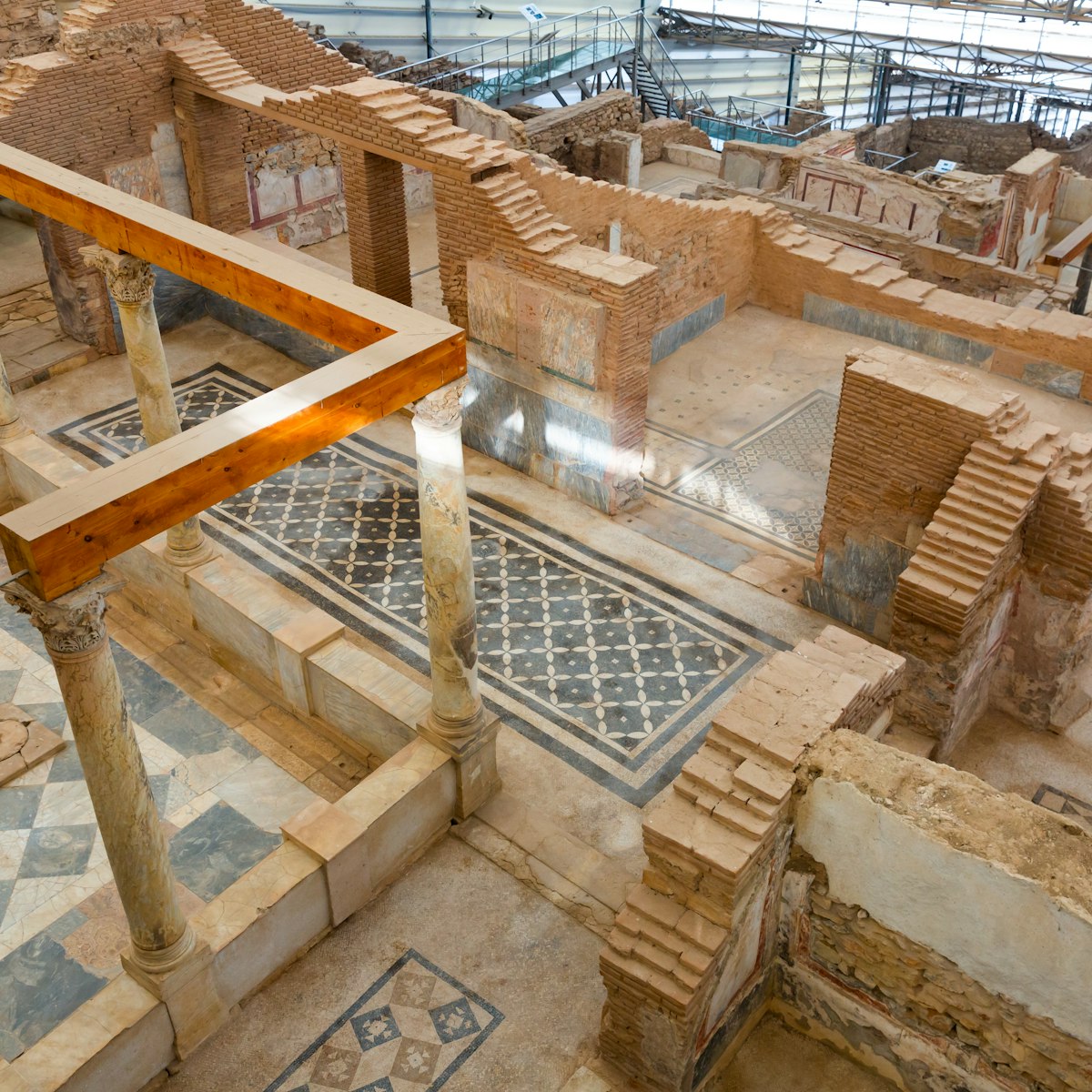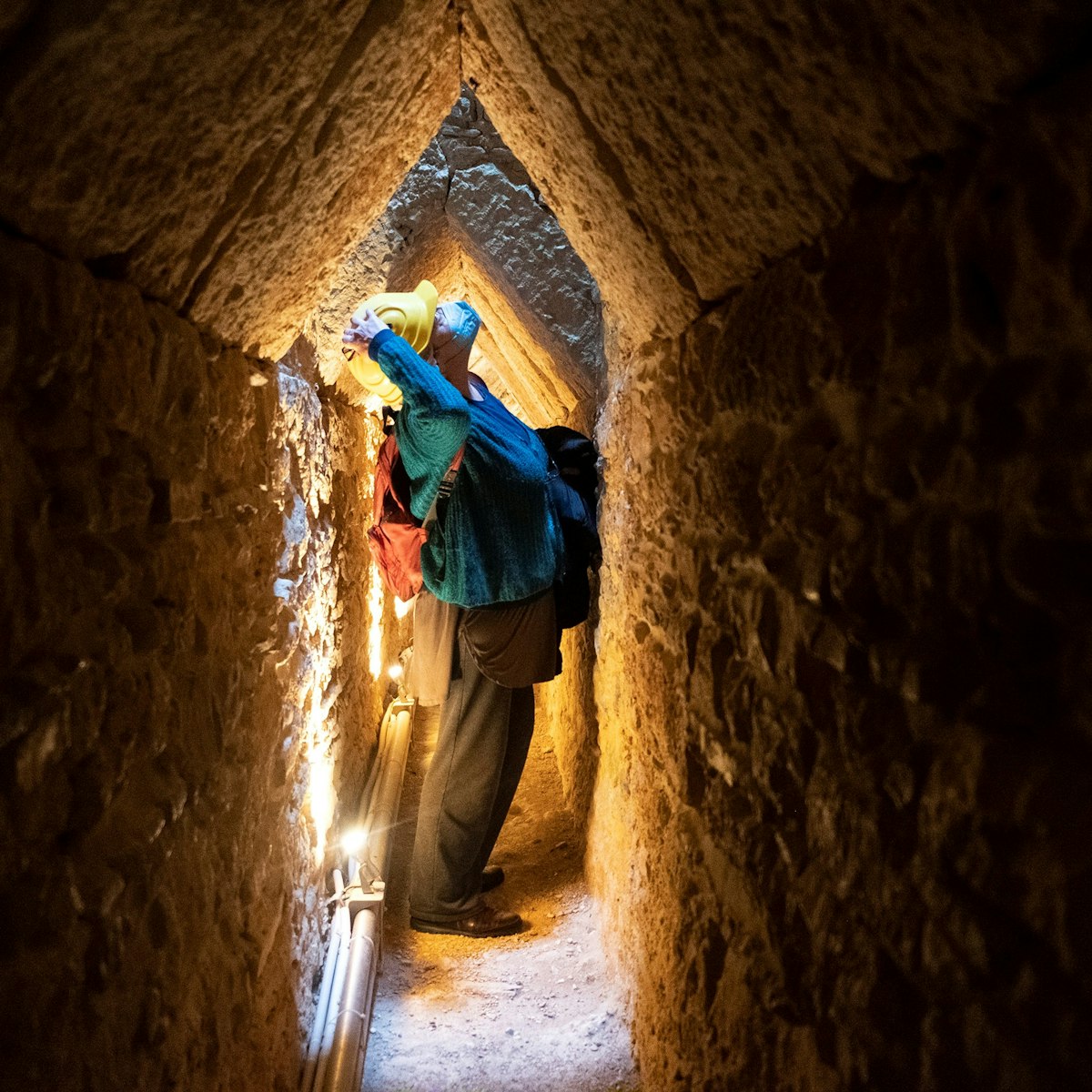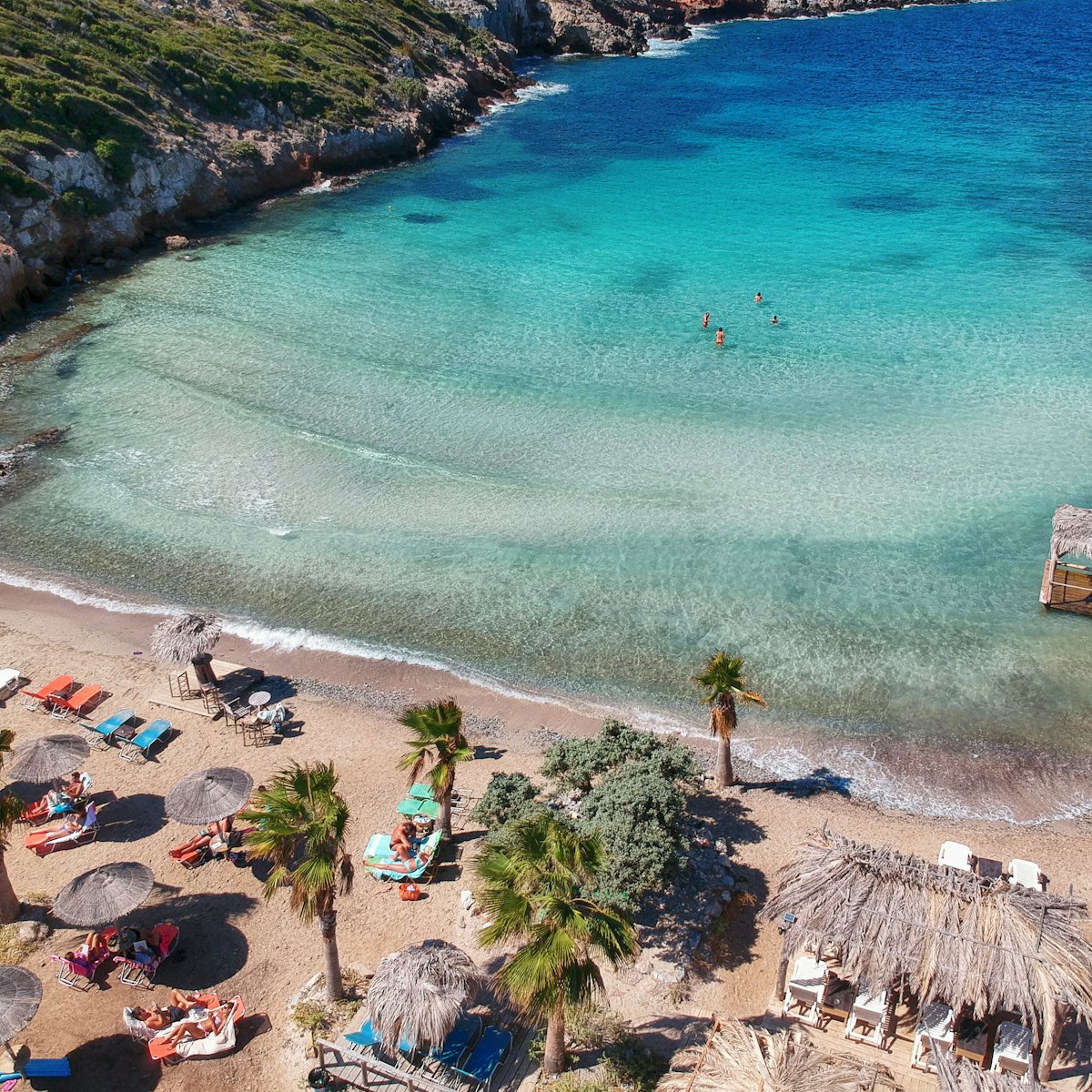Ancient Miletus in the valley of the Büyük Menderes River was once a great port city. Its mixed Hellenistic-Roman ruins are impressive, though due to erosion and overgrazing there's little shelter from the sun and you'll have to pick your way across rocky scrubland. Highlights include the Great Theatre and the fascinating Miletus Museum, which also exhibits findings from nearby Priene. Make the museum your first port of call in order to pick up the informative (and free) Miletus Circular Tour map.
Although Miletus' distant origins remain unclear, it's likely that Minoan Cretans came in the Bronze Age (the word Miletus is of Cretan origin). Ionian Greeks consolidated themselves from 1000 BC, and Miletus became a leading centre of Greek thought and culture over the following centuries; most significantly, the Milesian School of Philosophy (from the 6th century BC) featured such great thinkers as Thales, Anaximander and Anaximenes. Their observations of nature emphasised rational answers rather than recourse to mythical explanations, putting them among the world's first scientists.
Like the other coastal cities in the region, Miletus was fought over by Athens and Persia, and finally taken in 334 BC by Alexander the Great, who ushered in the city's golden age. Rome took over exactly two centuries later, and a small Christian congregation developed after St Paul's visits at the end of his third missionary journey around AD 57. In Byzantine times Miletus was an archbishopric. Unlike other coastal cities, enough of its port was free from silt build-ups for the Seljuks to use it for maritime trade through the 14th century. The Ottomans abandoned the city when its harbour finally silted up, and the Büyük Menderes River has since pushed Miletus 10km inland.
You'll notice almost immediately that the streets of Miletus have a right-angle grid plan – the brainchild of local architect Hippodamus. Approaching the site from the car park, the Great Theatre dominates. Miletus' commercial and administrative centre from 700 BC to AD 700, the 5000-seat Hellenistic theatre had majestic sea views. The Romans reconstructed it in the 1st century AD to seat 15,000 spectators.
Exit the theatre through the vomitorium (an exit tunnel) on the right to reach the rest of the site. Above the theatre, Byzantine castle ramparts provide views to the east of the former port called Lion Harbour after the leonine statues that guarded its entrance. South of the harbour are the northern and southern agoras, and between them, the bouleuterion (city hall).
Adjoining the northern agora to the east is the Delphinium dedicated to Apollo; it's the oldest shrine in Miletus. It marked the start of a 15km-long processional way to the temple and oracle at Didyma. As if by magic, the laurel trees that Greeks considered sacred to Apollo still cast their shade near the Milesian temple ruins.
Southwest of the southern agora, the Baths of Faustina, constructed for Marcus Aurelius' wife, are worth visiting; the massive walls and inner floors of the two spacious structures still survive. The designers' ingenious plan used hypocausts (an underfloor system of hot-water pipes) and tubuli (terracotta wall flues), which kept the interior of the caldarium very hot. Next to it was a refreshing frigidarium (cold bath).
Southwest of the baths is the stadium and the Miletus Museum. To the southeast is the post-Seljuk İlyas Bey Camii (1404), renovated in 2012 with an intricate doorway.
There are cafes near the entrance, including one flanking a 14th-century caravanserai.
Dolmuşes linking Söke (₺8, 40 minutes) with Didyma (₺5, 25 minutes) via Miletus run hourly in summer and every two hours in winter.






